|
|
Location | History
| Historic Remains | Geography
| Politics | Economy / Industry
| Education | Demography
| Culture | Major Tribes
| Transport
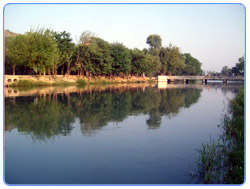 Gujrat is a district of Punjab Province in Pakistan. It is an ancient
district located in between two Gujrat is a district of Punjab Province in Pakistan. It is an ancient
district located in between two
famous rivers, the Jhelum and Chenab. Because of its proximity with the
rivers the land is good for cultivation with rice and sugar cane as main
crops. It is bounded on the northeast by Mirpur, on the northwest by the
River Jhelum which separates it from Jhelum District, on the east and
southeast by the Chenab River, separating it from the districts of
Gujranwala and Sialkot, and on the West by Mandi Bahauddin. District Gujrat
is spread over an area of 3,192 square kilometres, and is divided into three
tehsils, Gujrat, Kharian, and Sarai Alamgir. There are many historic
villages and towns in the district such as Chakdina, Kunjah, Dinga.
Search
Gujrat on Satellite Map
Places of Interest
| Hotels |
Eating & Dining
| Parks & Gardens |
Educational Institutes |
Hospitals |
Sport Centers |
Banks |
ATM |
Fuel Stations |
CNG Stations |
Police Stations |
Shopping /Trade
Location
Gujrat is situated on the bank of Chenab River, situated about 120 KM north
of Lahore.Prominent nearby locations include Jhelum, Gujranwala, Mandi
Bahauddin, Sialkot and Bhimber-Azad Kashmir. The city is surrounded by many
villages which supply a significant Labor to the local market.
Go To Top
History
Ancient History
According to the Imperial Gazetteer of India:
“ GUJRAT Town itself is a place of some antiquity, and the District bounds
in ancient sites.The district formed part of the kingdom of Porus, who was
defeated by Alexander, probably in the Karri plain beyond the Jammu border,
in July, 326 B.C. ; but four years later was conquered by Chandragupta
Maurya in the national rising which took place on the death of Alexander. It
remained under the Mauryas until shortly after the death of Asoka in 231,
and about forty years later came under the sway of Demetrius the Graeco-Bactrian.
The overthrow of the Bactrians by the Parthians in the latter half of the
second century brought another change of rulers, and the coins of the
Indo-Parthian Maues (c. 120 B. c.), who is known to local tradition as
Raja Moga, have been found at Mong. At the end of the first century A.
D., ie whole of the Punjab was conquered by the Yueh-chi. For several
hundred years nothing is known of the history of the District, except that
between 455 and 540 it must have been exposed to the ravages of the White
Huns. Dr. Stein holds that the District formed part of the kingdom of
Gurjara, which, according to the Rajatarangini, was invaded between 883 and
902 by Sankara Varman of Kashmir, who defeated its king Alakhana. This may
be the Ali Khan to whom tradition ascribed the refounding of GUJRAT.”
However the foundation of the capital, Gujrat, according to the Ancient
Geography of India:
"is ascribed to a king named Bachan Pal of whom nothing more is known ; and
itsrestoration is attributed to Ali Khan a Gujar, whose name is strangely
like that of Alakhana, the Raja of Gurjara , who was defeated by Sangkara
Varmma between AD 883 AD 901."
Lodhi-Mughal Era
Authentic history commences only in the Lodi period, when Bahlolpur, 23
miles (37 km) north-east of Gujrat, was founded in the reign of Bahlol
(1451-89). Khwas Khan, governor of the Rohtas under Sher Shah Suri, founded
Khwaspur near Gujrat. The settlement of the tract was completed by Akbar,
who built a fort and compelled the Gujars to settle in it. The tract was
then named Gujrat and formed into a separate district. Revenue records have
been preserved in the families of the hereditary registrars (kanungos), and
these exhibit Gujrat the capital of a district containing 2,592 villages,
paying a revenue of 16 lakhs. In 1605 the famous Saiyid Abdul Kasim received
Gujrat as a tuyul or fief from Akbar. On the decay of the Mughal power,
Nadir Shah ravaged the District and destroyed Gujrat. The country also
suffered at the same time from the ravages of Ahmad Shah Durrani, whose
armies frequently crossed and recrossed it.
Sikh Era
Meanwhile the Sikh power had been asserting itself in the Easter Punjab; and
in 1765 Sardar Gujar Singh , head of the Bhangi confederacy, crossed the
Chenab, defeated the Gakhar chief, Mukarrab Khan, and extended his dominions
to the banks of the Jhelum. On Gujar Singh's death in 1788, his son, Sahib
Singh , became involved in a war with Mahan Singh, the chieftain of
Gujranwala, and afterwards with his son , the celebrated Ranjit Singh. After
a few months of desultory warfare in 1798, the Gujrat leader found it well
to accept a position of dependence under the young ruler of Gujranwala. At
length, in 1810, Ranjit Singh, now master of the consolidated Sikh empire,
determined to depose his tributary vassal. Sahib Singh with drew to the
hills without opposition, and shortly afterwards accepted the Bajwat
territory in the present Sialkot
District conferred on him in jagir.
British Era
In 1846 Gujrat came under the supervision of British officials, when a
settlement of land revenue was effected under order from the provisional
government at Lahore. Two years later, the District was the scene of some of
the battles which decided the even of the second Sikh War. While the siege
of MULTAN still dragged slowly on, Sher Singh established himself at
Ramnagar on the Gujrawala side of the Chenab,22 miles (35 km) below Gujrat,
leaving the main body of his army on the northern bank. Here he awaited the
attack of the British, who attempted unsuccessfully to drive him across the
river, on November 22, 1848. Lord Gough withdrew from the assault with heavy
loss ; but sending round a strong detachment under Sir Joseph Thackwell by
the Wazirabad ferry, he turned the flank of the enemy, and won the battle of
Sadullapur. Sher Singh retired northward, and took up a strong position
between the Jhelum and the Pabb Hills. The bloody battle of Chilianwala
followed (January 13, 1849) a victory as costly as a defeat. On February 6
Sher Singh again eluded Lord Gough's vigilance, and marched southwards to
make a dash upon Lahore; but the British pressed him close in the rear and,
on February 22, he turned to offer battle at Gujrat. The decisive engagement
which ensued broke irretrievably the power of the Sikh. The Punjab lay at
the feet of the conquerors, and passed by annexation under British rule.
Find more about
History of Pakistan Go
To Top
Historic Remains
There are many historical buildings and ruins in and around Gujrat. The
Grand Trunk Road commonly abbreviated as G.T. road built by emperor Sher
Shah Suri also passes through Gujrat. The road still exists today, along
with its period stone wall. The nearby towns of Jalal Pur Jattan,Pindi Miani,
Shadiwal, Kalra, Tanda, Adowal, Gandra Kalan, Kotla, Dinga, Kunjah and many
more have historical buildings and ruins.
Go To Top
Geography
Gujrat is an ancient city of Pakistan located between two famous rivers,
Jhelum River and Chenab River. Because of its proximity with the rivers, the
land is good for cultivation of rice and sugarcane as main crops. It is
bounded on the northeast by Jammu and Kashmir, on the northwest by the
Jhelum River, on the east and southeast by the Chenab River, separating it
from the districts of Gujranwala and Sialkot;and on the west by Mandi
Bahauddin District. Go To Top
Politics
The district has a wide political importance. It has produced many historic
names like Major Raja Aziz Bhatti Shaheed (Nishan-e-Haider), Maj. Shabbir
Sharif Shaheed (Nishan-e-Haider) and Majar M. Akram Shaheed (Nishan-e-Haider).
Ch. Innayat ullah Akbar, founder of Taleem ul Islam High school Murarian, ex
Haakim e Aala Khaaksaar Tehrik West Pakistan. He was the son of Ch.
Fateh Mohammad, VCO in Royal Indian Engineers.His brothers, Ch. Rehmat ullah
and Ch. Nazir Ahmed also did serve in Royal Indian Army in the Engineers
Regiment.
A big name in the history of Gujrat is Khan Bahadur saab he was one of most
respected and feared person in gujrat one of the biggest zamendar of gujrat
with his support his younger brother had made is mark also Nawab Sir Fazal
Ali ,the head of the Nawabzada family of Gujrat and also the founder of the
Zamendara College of Gujrat. Nawabzada Gazanfar Ali Gul, ex-MNA is from
Nawab family.
Prominent leaders include Chaudhry brothers from gujrat. Ch. SHUJAT HUSSAIN
is the leader of PML(Q), big political party of pakistan. He is also the
former prime minister of Pakistan. His brother Chaudry Pervez elahi is
former chief minister of Punjab. Another brother Ch. Wajahat Hussain also
known as Gujrat´s "commander" is elected MNA from Gujrat district. The
smallest brother Ch Shaffat is nazim of District Gujrat.
Go To Top
Economy / Industry
Gujrat is also known for its clay with which the locals have, for long,
produced quality pottery. The city also produces fine furniture. Over the
last few decades, Gujrat has also attained a name in the manufacture and
export of Electric Fans. Gujrat is also home to one of the two largest shoe
manufacturing companies in Pakistan, namely Service Industries, which runs a
large shoe factory in the city. There are about 1,059 cottage level
and small to large scale industrial units operating in the district. Rice
production and export is another major product of Gujrat. There are
many other factories engaged in manufacturing of electrical goods, electric
motors and rice cleaning mills. Most are cottage industries, providing
employment to a large number of people and accounting, in aggregate, for
more than 90 percent of the domestic market.
The story of the emergence of the electric fan manufacturing industry in
Pakistan started with a few enterprising individuals in the early 1940s,
struggled against all odds, and created, without government or foreign help,
resulting an efficient industry. There are now over five hundred fan
factories in Gujrat, Gujranwala, Lahore and a few other cities. Most of the
Fan Industries are in Gujrat.
Find more about
Worldwide
Business & Economy Go To Top
Education
A university UOG was established in 2003, just near the Govt College for
Girls. The main campus of the University is called Hafiz Hayat Campus. Hafiz
Hayat is an ancient legend for the Gujrat city. At the same time there are
two more Govt Colleges in the city but to complete the lack of hunger for
knowledge there are so many private colleges. These colleges cover some
special subjects for each. As the population of the city was
increasing day by day so there was great need for Elementary, Middle and
High Schools too.As the Govt had not a lot of resources to cover this whole
need, so private schools started to born. Buthaving Govt and Private
institutions in the same city dosen't mean that the standard of education is
low.But a competition can be seen between them which encourages the students
as well as the teachers to go beyond the limits of theoratical studies. So
students can learn more not just by understanding the material but also by
practicing it.
Find more about
Worldwide Education Go To Top
Demography
According to the 1998 census of Pakistan the total population of Gujrat
district was 2,048,008 of which 1,026,000 are males and 1,022,000 are
females, with a population density of 642 persons per square kilometre. Over
25.62% of the population was recorded as being urban.
Go To Top
Culture
Gujrat produces low temperature pottery ceramic goods, Hukkas , artistic
handicrafts, flower pots, "Changairian" (made from the leaves of palm
and date trees), cotton mates and woollen shawls. Sohni Mahiwal is a famous
folk tale of the Punjab region. The heroine of the story,
named "Sohni" (a Punjabi word, meaning "beautiful"), came from the Gujrat
region. She used to meet her lover "Mahinwal" by crossing the Chenab river,
sitting on a pitcher. The tale is still told to this day, and is an
essential part of Punjabi culture. The anniversary of Kanwan-Wali Sarkar
near Karuan wala Gujrat is celebrated with a fair in August every year. He
is known as the one of the greatest saints that ever lived. A famous miracle
was when water in a well actually turned to milk for a period of time. The
well is still there. The locals have a myth that it rains heavily at the
time of fair (but actually the rain falls because of monsoon)and "Wengi Wali
Sarkar" anniversary in 5 january every year at village Haji Wala near
Karianwala Tehsil and District Gujrat.
Find more about Culture of Pakistan
,
People, Art & Culture
Go To Top
Major Tribes
The principal tribes of the districts are Gujjars, Jats, , Mughals, Syeds,
Rajputs, Kashmiris, Arians and Awans.
The principal Gujjar zClans are:
-
khatana
-
Maher
-
Mahrana
-
Kalo
-
Chachi
-
Thikria
-
Tinday
-
Paswal
The principal Jat Clans are:
-
Bagril
-
Bangial
-
Badhan
-
Chadhar
-
Cheema
-
Dhillon
-
Dhotar
-
Gujjral
-
Ghumman
-
Gondal Jat
-
Heer or
Hayer
-
Hanjra
-
Kang
-
Khokhar
-
Langrial
-
Mangat
-
Sahi
-
Sarai
-
Sipra
-
Tarar
-
Sandhu
-
Sial
-
Tatla
-
Thathaal
-
Virk
-
Waraich
-
Malhi
Go To Top
Transport
The district, with 1,019 kilometres of road, is linked with Gujranwala,
Jhelum, and Mandi Bahauddin districts
through metalled roads. The main Peshawar - Karachi railway line passes
through the city and it is amongst
an important railway stations of this route. The district is linked with
Jhelum, Mandi Bahauddin, Sargodha and
Gujranwala districts through Pakistan Railway Network. Daewoo Express has a
terminal at GT Road Gujrat,
started on May 14, 2004 and connects Gujrat with Lahore. Gujrat airport does
not host any commercial flights,and people use the nearby Allama Iqbal International Airport, Lahore and
Sialkot International Airport for
domestic and international flights.
Go To Top |




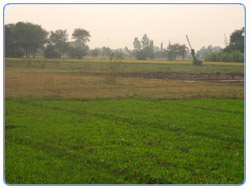
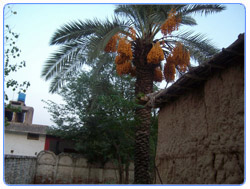
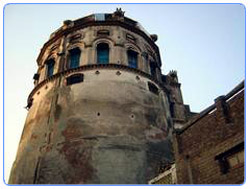
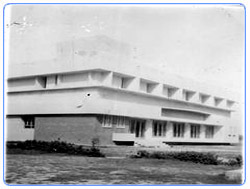
.jpg)
 Gujrat is a district of Punjab Province in Pakistan. It is an ancient
district located in between two
Gujrat is a district of Punjab Province in Pakistan. It is an ancient
district located in between two